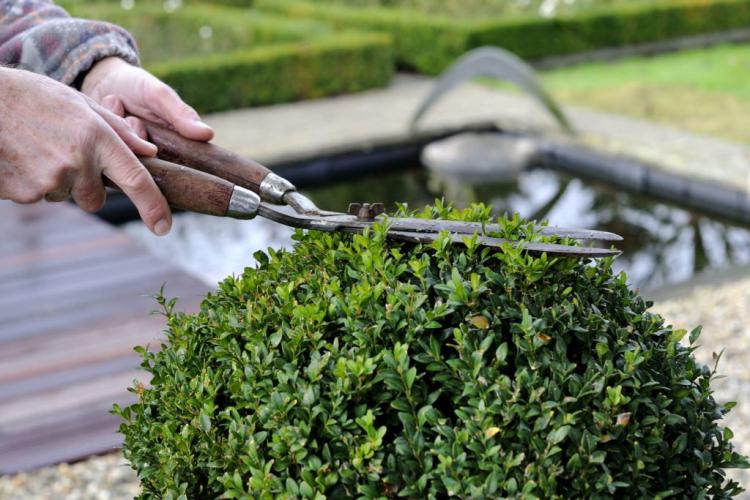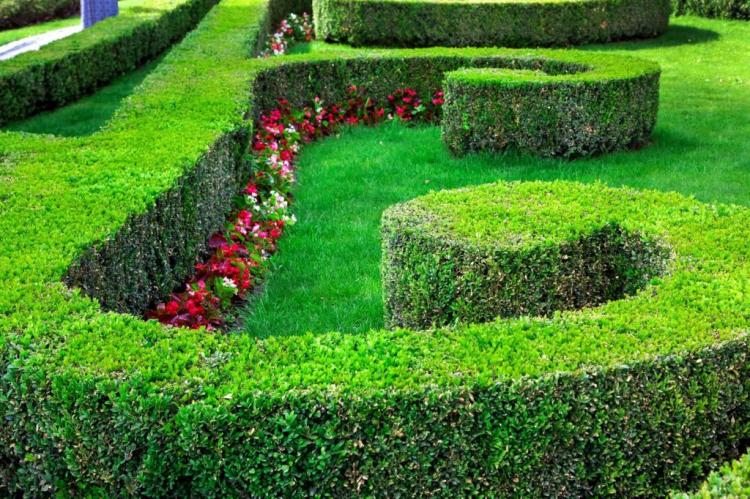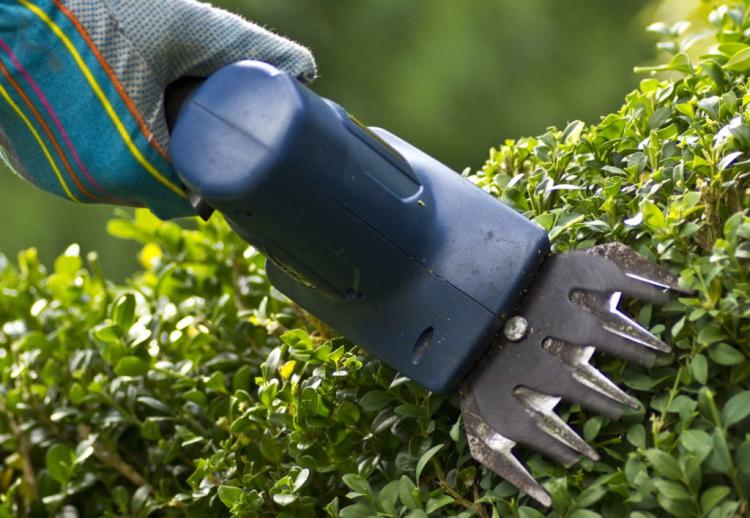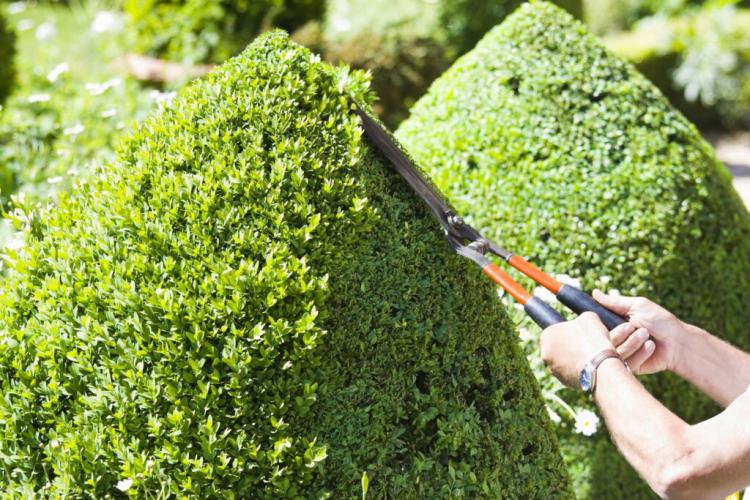Cutting boxwood: expert tips on timing and procedure
The boxwood is one of the most popular topiary trees. Here you can find out everything you need to know about the timing, procedure, and technique when cutting. The boxwood ( Buxus ) can now look back on a long career as a popular topiary. Buxus, growing as a shrub or small tree, already adorned the famous classical English gardens in countless variations of shape.
If it is not cut regularly, it is certainly difficult to imagine what graceful shapes it can take on. Due to its slow growth, it is excellently suited to cutting it into complex shapes and structures. In addition to being patient, there are a few things you should keep in mind to achieve the desired result when pruning the boxwood.
When to cut the boxwood
Table of Contents
The perfect time to cut a box tree is influenced by two components: On the one hand, the season is of course decisive, on the other hand, the prevailing climate plays a major role in the right cutting time. The procedure also depends on whether the Buxus is grown as a topiary or as a hedge.

Pruning boxwood: the right time of year
You can cut the boxwood from spring to autumn – from April to September. A general distinction is made between shaped and nourishing cuts. You should make topiary pruning at the beginning of the growth in spring. The maintenance cuts, on the other hand, serve to maintain the created shape despite further growth. Before the shape cut, an even coarser and more radical cut can be made. This serves to fundamentally correct the growth of the boxwood so that the woody part of the shrub is cut back.

A distinction is made between the following types of cuts:
- Cut back
- Very early in the year (as early as March)
- Before the new growth
- Down to the lignified part
- Basic shape correction
- Topiary
- Much finer cut than the cutback
- From April as soon as the first budding occurs
- The form is fundamentally determined, small corrections are made
- Care cut
- Builds on the topiary
- Can be done several times a year
- At least four weeks after the last cut
- Last topiary in September
Pruning boxwood: timing depending on the habit
The optimal time for pruning should also be determined according to which growth form you are aiming for. If the Buxus is only to border a bed as a hedge, it is sufficient to make a one-off shape cut in summer (July to August). If the scissors are used to cut more complex shapes or spheres, the motto “the more often, the better” applies. Because in this way the branching and the dense growth of the decorative topiary are promoted. However, as mentioned before, a minimum grace period of four weeks must be observed between the cuts.
You might so like: 10 Tips For Fresh Rosemary From Your Flower Bed

Pruning boxwood: the right weather
The best time to cut a box tree is determined by both the season and the climatic conditions. So you shouldn’t cut your book in strong sunshine or rainy weather, as this increases the risk of fungal infestation. A dry day with an overcast sky is ideal for cutting the boxwood.
Tip: So that your boxwood is not affected by strong pruning, you can provide it with nutrients and strengthen it as a precaution. Organic universal fertilizer with long-term effects is ideal for this.
How to cut the boxwood?
The boxwood often delights us in front gardens with its geometric shapes. In the following, you will find out how you can easily create these green works of art yourself with the right tools and the right cutting technique.
You might so like: Cutting elderberry: timing and procedure when cutting back
Cutting boxwood: the right tool
So that the fine leaves and the shoots of the boxwood are not crushed, it is important to always use tools with sharp blades to cut the boxwood. These can be electrically powered scissors, for example, which, however, are not suitable for finer cutting methods. The cost of the purchase is also not insignificant and it takes some practice to be able to use the electric scissors. Hand hedge trimmers are more suitable when sharpened for the box, especially for the somewhat coarser topiary.

For filigree detailed work, you should use special boxwood shears. These usually have a significantly shorter blade than manual hedge trimmers, so that the curves and corners can be cut in a more controlled and precise manner. However, such scissors are only suitable for fine, unwooded shoots that can only be obtained by regular cutting.
Pruning boxwood: how deep to prune?
Unless you have chosen a more radical cut at the beginning of the year, you should not cut more than this year’s increase in shoots. Deeper cuts do not pose any major challenges for the boxwood when it comes to sprouting again, but this can take a while, and especially in summer, the preppy appearance of the topiary is damaged by too much waste. To create an even hedge shape, it is better to divide the total length into shorter sections. First of all, you can be sure that you can make corrections. After all, a few centimeters too much are cut off very quickly. If the book is too short at one point, you either have an unsightly hole or it has to be shorter everywhere. Therefore: less is more.
You May Also Like Boxwood Tree Fertilizer
Cutting boxwood: use templates
Geometric shapes are often perceived as particularly aesthetic by the human eye – this is also the case with topiary trees such as boxwood. In the freehand cut, however, only a few perfectly fitting geometric figures can be implemented. A boxwood ball becomes more of an oval and the green pyramid with a flat roof should actually be a cuboid with sides of the same length. It is therefore advisable to use templates for the cut in the case of geometric growth forms. These are simply stopped and what is overdue has to give way. You can easily make a template yourself, for example from cardboard or wood, if you want to use it more often.

Cutting boxwood with a template: instructions
- Measure the radius (= half the diameter) or half the side length
- Cut out the template
- Stop the template and cutaway







Please think about the noise that your neighbors, children, spouse and yourself will have to endure if the bushes are always cut in the future. … Maybe you could put here a bush with fruit that does not need to be cut, then you can even eat delicious berries, directly from the bush!